The U.S. National Trails System‘s 30 Scenic and Historic routes alone span over 50,000 miles, longer than the entire Interstate Highway System. Extending across all 50 states, the National Recreation Trails network contains over 200,000 additional miles of public pathways. A person could walk these trails continuously for years and still experience only a fraction of the total system.
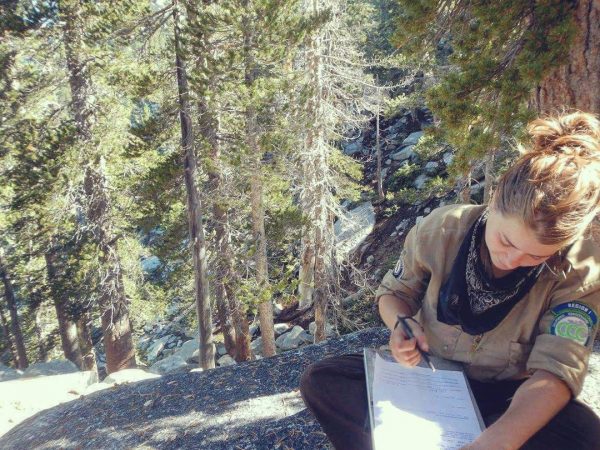
Sustaining public trails throughout the nation is a herculean task coordinated by various federal agencies (including the National Park Service, Bureau of Land Management, USDA Forest Service, U.S. Fish & Wildlife Service, and U.S. Army Corps of Engineers) as well as state-level organizations, like the California Conservation Corps (or: CCC). In turn, these agencies rely on a huge number of paid and volunteer workers to create and maintain both federal and state trails nationwide.

Kelly Kate Warren has spent the last five years working with the CCC as a trail worker and backcountry cook, living in places most people only go to visit. She spent last summer in a designated Wilderness area of Northern California, listening to 99% Invisible and thinking about the invisible art (and “Leave No Trace” ethos) of making trails to facilitate wilderness experiences. Her job “cooking for 20 people in a primitive kitchen in the middle of the Wilderness is very cool,” she tells 99pi, and she “can definitely tell you how to design a tamale steamer basket out of river rocks and sticks.” But she got in touch for another reason: to talk about “making hiking trails that fade into the landscape.”
Behind the Scenery
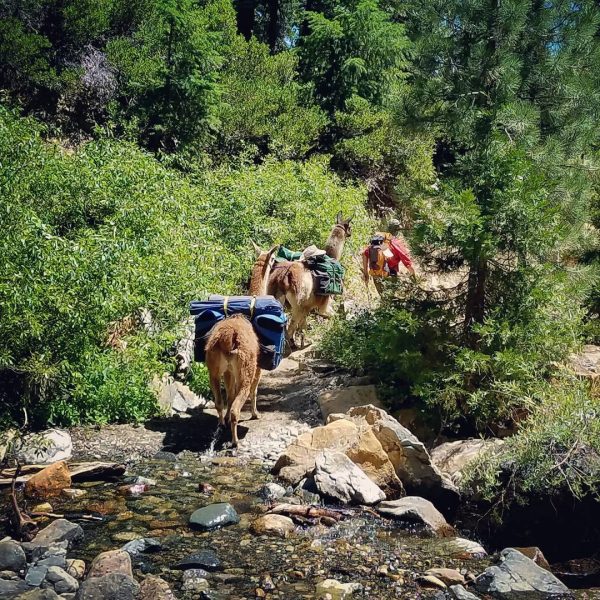
Every year, thousands of Americans are employed by (or volunteer with) public land management agencies to build and maintain trails across the country. These trails do not emerge naturally (as some might imagine) from regular use. In fact, their “natural” appearance is the byproduct of extremely conscientious design. Most of them, explains Warren, are carefully “planned with input from biologists, ecologists, botanists, and a variety of other scientists who assess the environmental impact of funneling a large quantity of humans through sensitive natural areas.” A high-traffic trail may get over 20,000 visitors per year and needs to look beautiful throughout.
Eroded trail (upper left) rehabilitated (lower right) and process photos along the way. This intervention helped to preserve root systems and provide a walkable pathway, including a hidden French drain and weathered stones. Images courtesy of Mike McFadin
In functional terms, says Warren, trail construction often “boils down to keeping water off the trail. Trails can easily funnel water and if planned or maintained improperly they will turn into creeks and waterfalls during the rainy season.” Hikers seeking to avoid these soggy ruts will step off the path, which can turn a a simple, low-impact trail into a series of confusing side trails. This phenomenon also creates health and safety issues, potentially leading people off the beaten path and into danger. “It’s also … ugly. Bad design begets ugly trails. You know your issue with currency?” she asks, referring to The Colour of Money. “That’s how I feel about poorly designed trails.” And creating functional trails is just one small piece of a much bigger design problem.
Crafting a Wilderness Experience
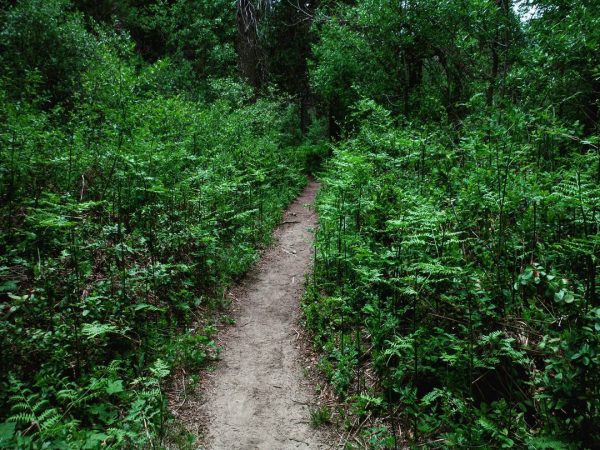
Mike McFadin, a USFS Wilderness & Trails Supervisor in Northern California, works with Warren and others out on trail projects. In his opinion, “the best trails ever are the ones that [visitors] think ‘just happened'” — a built trail might look like a deer path, for instance, that seems to coincidentally span between a parking lot and nearby lake. Even steep paths (requiring steps) are carefully made to blend into the landscape, looking more aged and organic rather than newly designed.
Warren and McFadin share a passion for what they refer to as the “wilderness experience.” As described in the Wilderness Act of 1964, “A wilderness, in contrast with those areas where man and his own works dominate the landscape, is hereby recognized as an area where the earth and its community of life are untrammeled by man, where man himself is a visitor who does not remain.”
Trail crew at work on a stone staircase, images courtesy of Mike McFadin
On the more obvious ends of the spectrum, crafting a “wilderness experience” means helping people avoid overt signs of humanity, including: auditory (radios and horns), visual (tents and trash) and olfactory (perfumes and gasoline) artifacts. But where Warren and McFadin work, the ethos goes beyond that. “There are glorious staircases in Yosemite and King’s Canyon that will take your breath away,” says Warren, but crews in her region “usually strive for trails that you hike without really noticing” — trails that are as invisible as possible. “That means swallowing your pride as a craftsperson [and spending time] replanting disturbed areas with native plants.”
“Our goal,” says McFadin, “is to have trails that reduce the impacts of human use, allowing for the public to have reasonable access to their land [but] be as subtle as possible.” The balance between subtly and usability can be a real challenge for trail designers. “When routing/designing new trails,” he elaborates, “many sociological tricks are employed at the most basic subconscious level to trick the users into staying on the trail and having a very pleasant experience.”
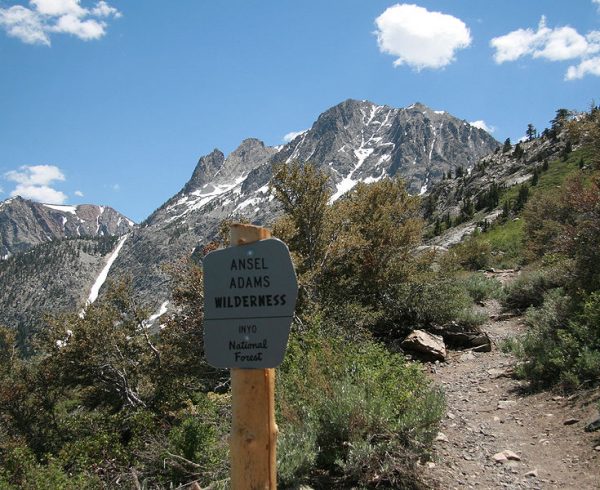
Trees, rocks and other cues can lead people while minimizing the impression they are being led. McFadin explains that he and his colleagues “are tasked with always using the minimum tool required to accomplish a task.” For instance: “we only have signs at trail heads and trail intersections,” and most of these signs do not include mileage, leaving users to determine distances using maps.
In places where there is only one safe path, bottlenecks are created (sometimes using stacked rocks) to force visitors to take the right route — McFadin provides an example: “there may be a steep walled canyon ahead and only one reasonable place to cross it so the cairns are used to lead people there.” Of course, as with many trail-building techniques, this is less simple than it sounds. In many cases, “rock work,” as Warren calls it, can involve selecting “good rocks (pretty face, high outside ears, nice contact)” and moving such stones over great distances, then crushing and assembling them using dry stone masonry techniques.
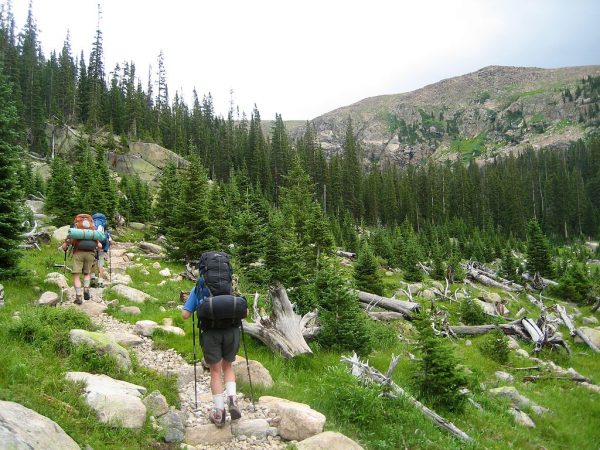
Designing a comfortable experience on trails also involves an understanding of human psychology. “We evolved in a much more dangerous world than today,” says McFadin. “As a result, we feel much safer along the edge of a meadow than out in the middle. On the edge, we can duck and hide from a threat” — or sneak up on prey. Accordingly, paths are designed to move people through parts of environments in ways that will help them feel safe and at ease.
Different trails have different requirements, too, changing the parameters of design from one to the next. Some trails need to be able to accommodate wheelchairs, walkers and other mobility aids. Other routes must factor in cyclists, cross-country skiers or horseback riders with different needs and levels of impact.
Trails and architecture in Grand Canyon National Park by Michael Quinn (CC by 2.0)
The USFS has guidelines covering all different kinds of trails (including snow and water trails). They also break trails down into classes (1 through 5) which span a scale of development intensity. Trail design parameters encompass an array of specific details to address, including: tread width, surface, grade, cross slope, clearing (i.e. width and height clearance) and turns (i.e. turning radius). How specific trails are built and maintained also depends in part on local conditions, like whether the soil is sandy, rocky or loamy.
In the end, it is a balancing act — each trail is designed to look as natural as possible in a given context, all while addressing various difficulty levels, local conditions and visitor types. Trail design is a deep and fascinating rabbit hole — those interested in learning more can start by checking out this trail fundamentals page from the USFS and take a look at part two of this series on trail design.

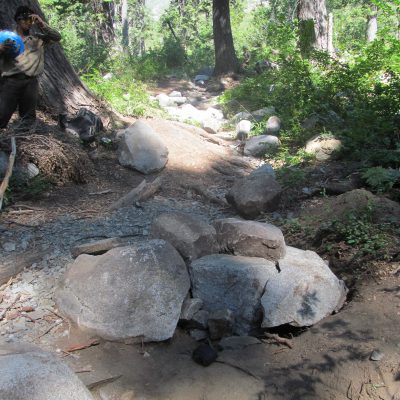
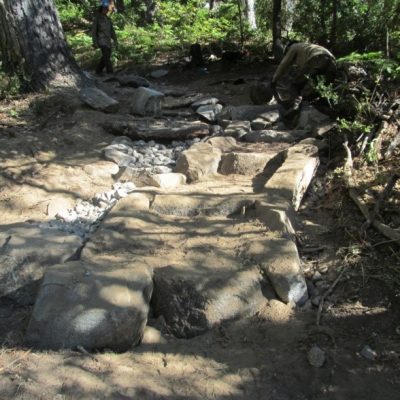
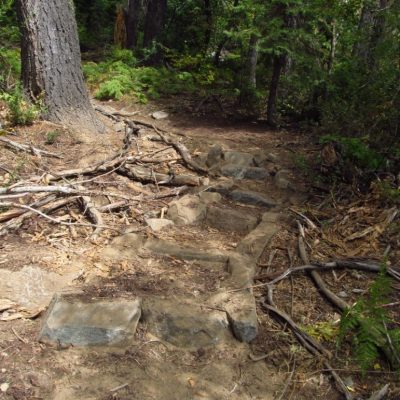
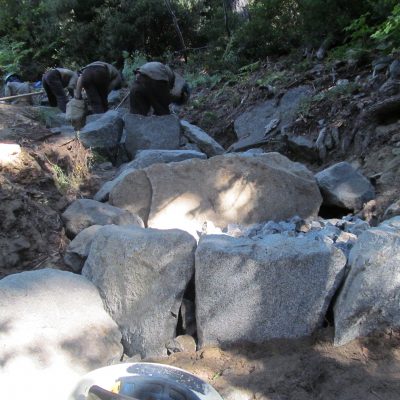
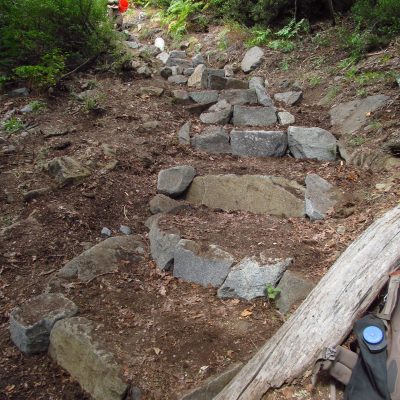


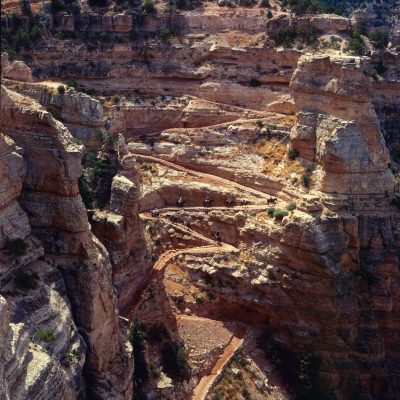
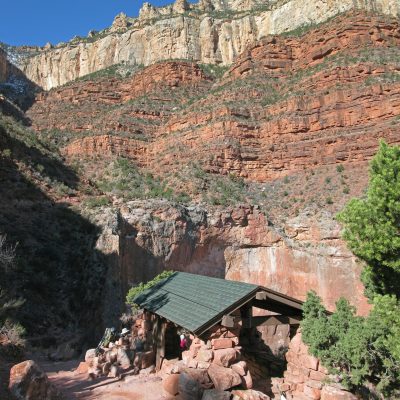



Comments (2)
Share
This is pretty cool, I love the thing about walking through the middle of a meadow. The idea that in theory that’s cool, but in practice, a bit disconcerting and they avoid it. 99PI does an awesome job with stuff like this, I hope you do a full podcast episode on it.
So…I’ve worked with Wilderness Volunteers a bunch of times, going into the backcountry and rehabbing trails, cleaning out water bars, rock work, etc. My very first trip was to the Jedidiah Smith Wilderness, to work on Table Mountain, in 2003. And the Forest Service liaison who worked with us? Mike McFadin. So cool!